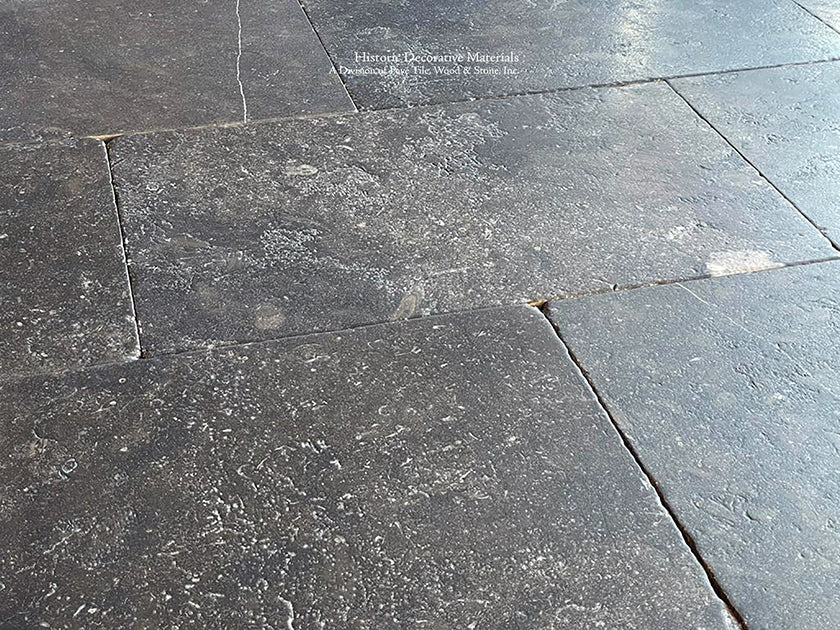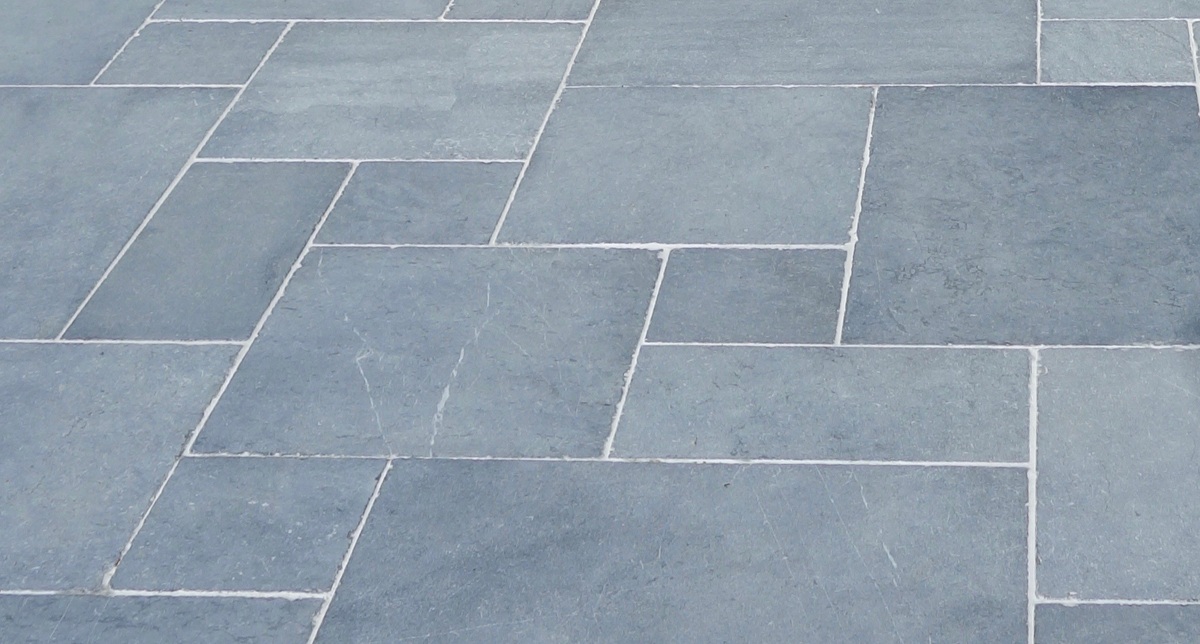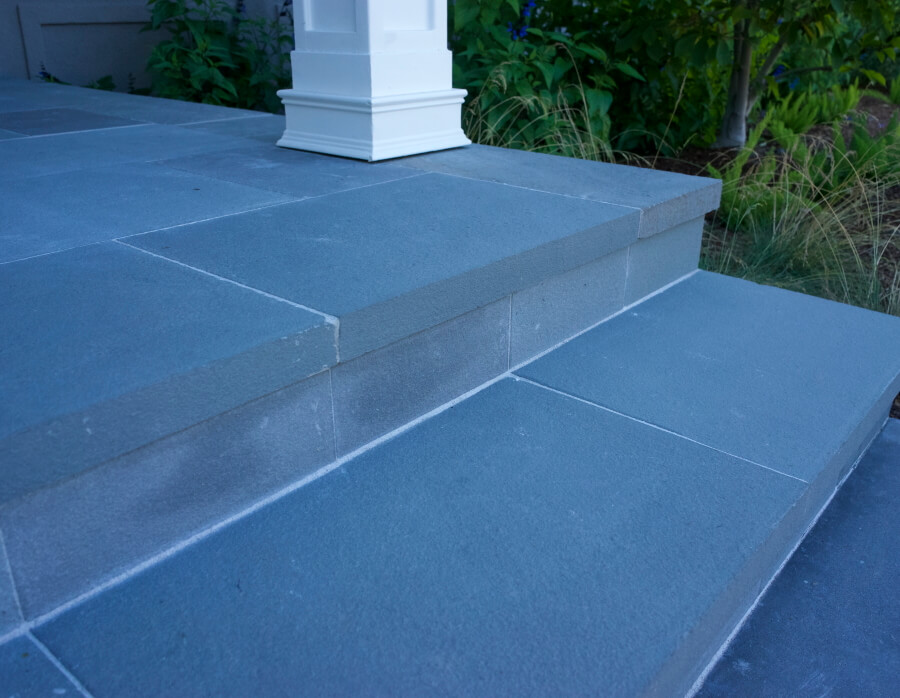Bluestone is a leading online jewelry retailer offering a wide selection of high-quality diamond and gemstone designs, with customization options to suit individual preferences and budgets. With a commitment to exceptional craftsmanship and customer satisfaction, Bluestone is the go-to destination for those seeking exquisite, personalized jewelry pieces.
Whether you’re in search of an engagement ring, wedding band, or a special gift for a loved one, Bluestone’s comprehensive range and competitive pricing make it a top choice in the digital jewelry marketplace. Explore their website to discover the perfect piece that celebrates life’s most precious moments.

Credit: pavehdm.com
Formation And Characteristics Of Bluestone
Bluestone is a fascinating natural material that has captivated people for centuries. In this section, we will explore the formation and characteristics of bluestone, delving into its geological origins, physical properties, and chemical composition.
Bluestone Formation
Bluestone is a type of sedimentary rock that forms through a process called lithification. It is primarily composed of sand-sized grains of minerals, such as quartz, feldspar, and mica, cemented together by natural substances like calcium carbonate or iron oxide. Over millions of years, these sedimentary particles accumulate in areas with ancient oceans or rivers, where layers of sediment build upon one another.
Through the slow and steady process of compaction and cementation, these sedimentary layers harden and transform into solid rock. The pressure of overlaying sediments, combined with the influence of heat and the flow of water through the pores, contributes to the formation of bluestone.
Physical Characteristics Of Bluestone
Bluestone possesses distinctive physical characteristics that make it easily recognizable. It typically showcases a bluish-gray hue, which is how it gets its name. However, bluestone can also exhibit variations in color, ranging from muted grays to rich blues or even greenish tones.
The texture of bluestone varies depending on its specific composition and the geological processes it underwent during formation. Some bluestone varieties are relatively smooth and fine-grained, while others may have a coarser texture with visible grains and occasional veining. This diversity in texture adds to the beauty and uniqueness of bluestone as a natural stone.
Chemical Composition Of Bluestone
The chemical composition of bluestone is predominantly made up of silica, along with other compounds that vary depending on its specific geological origin. Silica, in the form of quartz, contributes to the hardness and durability of bluestone. Other minerals present in bluestone, such as feldspar and mica, add to its unique characteristics and color variations.
Bluestone can also contain trace amounts of other elements, such as iron, calcium, or magnesium, which can influence its overall appearance and properties. These chemical variations contribute to the distinctiveness of bluestone, making each piece a true natural work of art.

Credit: pavertime.com
Common Uses Of Bluestone
Bluestone, a versatile and durable stone, finds numerous practical applications in various industries. Its strength, attractive blue-gray color, and sophisticated look make it a popular choice for a wide range of uses. In this article, we will explore the most common applications of bluestone, including building and construction, landscaping and outdoor applications, as well as decorative and artistic purposes.
Building And Construction
Bluestone’s durability and natural beauty make it an ideal material for building and construction projects. Its strength and resistance to weathering make it suitable for both indoor and outdoor use. Common uses of bluestone in building and construction include:
- Patios and Walkways: Bluestone is often used to create stunning patios and walkways. Its smooth texture and natural color provide a classic and elegant look to outdoor spaces.
- Cladding: Bluestone can be used as a cladding material to enhance the exterior of buildings. It gives a modern and sophisticated appearance while offering long-lasting beauty.
- Steps and Staircases: Bluestone steps and staircases are not only functional but also visually appealing. They can add a touch of elegance and charm to any building or landscape.
- Retaining Walls: Bluestone can be used to construct sturdy and aesthetically pleasing retaining walls. These walls serve to hold back soil and prevent erosion, while also adding visual interest to the landscape.
- Fireplaces: Bluestone is a popular choice for fireplace surroundings. Its natural warmth and beauty create a cozy and inviting atmosphere.
Landscaping And Outdoor Applications
Bluestone is widely used in landscaping due to its versatility and ability to withstand harsh weather conditions. Its natural properties make it perfect for various outdoor applications, including:
- Pathways and Driveways: Bluestone pavers are commonly used to create beautiful pathways and driveways. The smooth surface and durability of bluestone ensure they can withstand heavy foot and vehicle traffic.
- Garden Borders: Bluestone can be used to define garden beds and borders, providing a clean and polished look to the landscape.
- Patio Flooring: Bluestone is an excellent choice for patio flooring, offering a slip-resistant surface that is comfortable to walk on.
- Pool Coping: Bluestone coping is often used around swimming pools, providing a safe and stylish edge. Its non-slip texture makes it ideal for pool areas.
- Stepping Stones: Bluestone stepping stones can be strategically placed in gardens or landscapes to create a visually appealing path or focal point.
Decorative And Artistic Purposes
In addition to its practical uses, bluestone is valued for its decorative and artistic applications. Its unique color and texture allow it to be transformed into stunning pieces of art and accents, such as:
- Sculptures and Carvings: Bluestone can be sculpted or carved into intricate designs, creating unique and eye-catching sculptures or decorative elements.
- Fountain Features: Bluestone can be used to construct stunning water fountains, adding an elegant touch to outdoor spaces.
- Stepping Stone Mosaics: Bluestone stepping stones can be arranged in artistic patterns or mosaics, adding a creative and captivating element to gardens or pathways.
- Wall Murals and Tiles: Bluestone tiles can be used to create beautiful wall murals or decorative tiles, adding visual interest and sophistication to indoor spaces.
- Garden Ornaments: Bluestone can be shaped into various garden ornaments, such as planters, benches, or plaques, enhancing the overall aesthetic appeal of the garden.
Bluestone’s versatility and timeless attractiveness make it a sought-after material for a wide range of uses in building and construction, landscaping, as well as decorative and artistic applications. Its durability, natural beauty, and ability to withstand the elements ensure that bluestone continues to be a popular choice for various projects both indoors and outdoors.
Benefits Of Using Bluestone
Bluestone offers a multitude of benefits, including durability, versatility, and aesthetic appeal. Its strong composition ensures long-lasting use, while its wide range of color options allows for flexible design choices. Whether used for flooring or landscaping, Bluestone is a top choice for both residential and commercial projects.
Bluestone is a highly popular choice for various architectural and landscaping projects due to its numerous benefits. Its exceptional durability, versatility in design, and low maintenance requirements make it an ideal material for a wide range of applications.
Durability And Longevity
Bluestone is renowned for its remarkable durability, offering long-lasting results for any project. Its natural composition allows it to withstand extreme weather conditions, heavy foot traffic, and other external elements, making it perfect for outdoor areas such as driveways and walkways that require strength and resilience. With bluestone, you can rest assured that your investments will stand the test of time.
Versatility In Design
One of the standout features of bluestone is its versatility in design. Whether your project requires a contemporary or traditional look, bluestone can effortlessly complement any style. Its unique texture and color variations add a touch of elegance to any space, creating a visually appealing aesthetic. From sleek modern patios to charming rustic garden paths, bluestone can be tailored to suit various design preferences.
Low Maintenance Requirements
Bluestone is a low-maintenance material that requires minimal upkeep. Its dense and compact structure helps prevent stains, making it easy to clean with just water and mild detergent. Additionally, bluestone is highly resistant to fading, ensuring that its natural beauty remains intact for years to come. By choosing bluestone, you can enjoy a stunning space without the hassle of frequent maintenance.
All in all, the benefits of using bluestone are undeniable. Its durability and longevity make it an excellent investment for any project, while its versatility in design allows for endless creative possibilities. With its low maintenance requirements, bluestone offers both beauty and convenience. Whether you’re renovating your outdoor space or designing a new project, bluestone is the perfect choice.
Popular Bluestone Varieties
Bluestone is a widely used natural stone that is renowned for its durability, versatility, and timeless beauty. There are several popular bluestone varieties available in the market, each with its own unique characteristics and origins. Whether you are considering a bluestone patio, walkway, or pool deck, understanding the different types of bluestone can help you make an informed choice. In this article, we will explore three popular bluestone varieties: Pennsylvania Bluestone, Australian Bluestone, and Irish Limestone Bluestone.
Pennsylvania Bluestone
Pennsylvania Bluestone, also known as Pennsylvania Irregular Full Range or PA Bluestone, is one of the most sought-after bluestone varieties in the United States. Its distinctive color palette includes shades of blue, gray, brown, and green, which gives it a natural and rustic appearance. Pennsylvania Bluestone is quarried in northeastern Pennsylvania and is known for its superior quality and hardness. Its durability makes it suitable for a wide range of outdoor applications, including patios, walkways, steps, and pool surrounds.
Australian Bluestone
Australian Bluestone, also known as Victorian Bluestone or Basalt, is a popular bluestone variety originating from the volcanic regions of Australia. It features a stunning dark blue-gray color with occasional hints of brown and green, giving it a luxurious and modern appeal. Australian Bluestone is highly regarded for its density, strength, and resistance to wear and tear. It is commonly used for indoor and outdoor applications, such as flooring, cladding, paving, and landscaping.
Irish Limestone Bluestone
Irish Limestone Bluestone, also known as Kilkenny Limestone or Irish Blue Limestone, is a renowned bluestone variety sourced from the quarries in County Kilkenny, Ireland. It exhibits a unique mix of blue-gray tones, ranging from light to dark shades, creating an elegant and sophisticated aesthetic. Irish Limestone Bluestone is sought after for its natural beauty, durability, and versatility. It is often utilized for various architectural and landscaping projects, including walls, facades, countertops, garden features, and pathways.
By exploring the characteristics of these popular bluestone varieties, you can select the one that aligns best with your aesthetic preferences and project requirements. With their inherent beauty and durability, any of these bluestone options will elevate the visual appeal of your outdoor or indoor space while providing long-lasting performance.
Tips For Installing And Maintaining Bluestone
Bluestone installation and maintenance can be a breeze with these helpful tips. From proper preparation to regular cleaning, taking care of your bluestone is essential for its longevity and beauty.
Tips for Installing and Maintaining Bluestone
Bluestone is a popular and versatile natural stone that can be used for various applications, such as patios, walkways, and pool decks. Its unique blue-gray color and durability make it an excellent choice for outdoor spaces. When it comes to installing and maintaining bluestone, there are a few key tips to keep in mind. In this article, we will discuss the essential steps you need to follow in order to achieve a successful installation and ensure long-lasting beauty for your bluestone surfaces.
H3: Preparing the Installation Site
Before you begin the installation process, it is crucial to properly prepare the site. This involves several important steps to ensure a solid foundation for your bluestone. Here’s what you need to do:
1. Clear the area: Remove any existing vegetation, debris, or obstacles from the installation site. This will provide a clean surface for the bluestone and prevent unwanted growth or damage.
2. Excavate the soil: Dig down to a depth that allows for a suitable base material and the thickness of the bluestone pavers. This will ensure proper drainage and stability for your installation.
3. Level the ground: Use a compactor or tamper to level the excavated area. This will create a flat and even surface for the bluestone pavers to be installed.
4. Install a base material: Spread a layer of crushed stone or compacted gravel as the base for your bluestone. This layer will provide stability and help with water drainage.
5. Compact the base: Use a compactor to firmly compact the base material. This will further enhance stability and prevent shifting or settling of the bluestone over time.
H3: Installing Bluestone
Installing bluestone requires careful planning and precision to ensure a seamless and professional finish. Follow these steps for a successful installation:
1. Start from a straight edge: Begin laying the bluestone pavers from a straight edge, such as a patio border or walkway edge. This will create a neat and organized appearance.
2. Use spacers: Place spacers between each bluestone paver to ensure consistent spacing and allow room for jointing material. This will result in a visually appealing and structurally sound installation.
3. Secure the bluestone: Use a rubber mallet to gently tap each bluestone paver into place. Ensure they are level and firmly set in the base material.
4. Check for levelness: Regularly use a level to ensure the bluestone is installed evenly and has a slight slope away from structures to promote proper water drainage.
5. Fill joints: Once all the bluestone pavers are installed, fill the joints with a suitable jointing material, such as polymeric sand or mortar. This will help prevent weed growth and enhance the overall stability of the installation.
H3: Proper Maintenance Practices
Proper maintenance is essential to preserve the beauty and longevity of your bluestone surfaces. Follow these maintenance practices for optimal results:
1. Regular cleaning: Sweep or rinse your bluestone surfaces regularly to remove dirt, debris, or stains. For tougher stains, use a mild detergent and a soft brush to scrub the affected areas.
2. Sealing: Apply a high-quality sealer to your bluestone every few years to enhance its resistance to staining, weathering, and fading. Follow the manufacturer’s instructions for best results.
3. Avoid harsh chemicals: Avoid using harsh chemicals, acidic cleaners, or power washers on your bluestone surfaces, as they can damage the stone’s surface and lead to discoloration.
4. Clean spills immediately: Blot any spills on your bluestone surfaces immediately to prevent staining or etching. Prompt action will minimize the chance of permanent damage.
5. Repair damaged areas: If you notice any chips, cracks, or loose bluestone pavers, repair them promptly to prevent further damage and ensure the structural integrity of your installation.
By following these tips for installing and maintaining bluestone, you can create a stunning outdoor space that will withstand the test of time. With proper preparation, precise installation, and regular maintenance, your bluestone surfaces will remain beautiful and functional for years to come.

Credit: pbm1923.com
Frequently Asked Questions On Bluestone
What Kind Of Stone Is Bluestone?
Bluestone is a type of stone known for its blue-gray color. It is a popular choice for outdoor paving, as well as for countertops and other architectural features. Its durability and natural beauty make it a versatile option for various applications.
Is Blue Stone Expensive?
Yes, blue stone can be expensive due to its rarity and unique properties. The price may vary depending on the quality, size, and origin of the stone.
What Bluestone Means?
Bluestone is a type of natural stone commonly used in architecture and landscaping. It is known for its blue-gray color and durability, making it ideal for outdoor surfaces like patios and walkways.
Conclusion
Bluestone is a natural stone that offers durability, beauty, and versatility for various architectural and design applications. Whether used for countertops, flooring, or landscaping, Bluestone is a timeless choice that combines aesthetic appeal with functional benefits. Its unique color variations and textures add character to any space, making it a popular option among homeowners and designers alike.
With its numerous advantages, Bluestone is undoubtedly a top contender when it comes to durable and stylish stone options.


